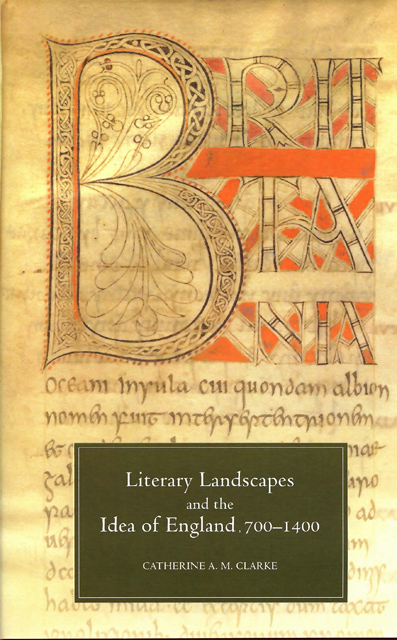Book contents
- Frontmatter
- Dedication
- Contents
- Acknowledgements
- Abbreviations
- Introduction
- Chapter One The Edenic Island
- Chapter Two Re-making the locus amoenus in Anglo-Saxon England
- Chapter Three Local Landscapes as Mirrors for England
- Chapter Four The Delightful City
- Epilogue: Disruptions and Continuities
- Bibliography
- Index
Chapter One - The Edenic Island
Published online by Cambridge University Press: 28 February 2024
- Frontmatter
- Dedication
- Contents
- Acknowledgements
- Abbreviations
- Introduction
- Chapter One The Edenic Island
- Chapter Two Re-making the locus amoenus in Anglo-Saxon England
- Chapter Three Local Landscapes as Mirrors for England
- Chapter Four The Delightful City
- Epilogue: Disruptions and Continuities
- Bibliography
- Index
Summary
Bede's Ecclesiastical History is in many ways the obvious place to begin a study of symbolic landscapes and the idea of England in medieval English literature. The opening description of Britannia announces the potent image of the idealised, Edenic island, and forms a primary source or perceived point of origin to which many later medieval texts – and even modern scholars – allude. Bede's representation of the Edenic island is hugely influential for the production of English identity in the medieval period and beyond, yet this iconic description is itself complicated and problematic. Far from being a true point of origin, it manipulates textual allusion, plays with source materials and historiographic traditions, and unsettles the established semiotics of the island image. As twenty-first-century audiences, we are also becoming less confident about how to read Bede. Re-appraised in the context of current critical interests such as the dynamics of intertextuality or the discourses of colonialism, the description of Britannia seems less honest and more evasive about its own textual and national politics.
Since Bede's description is so central to this study as a whole, a substantial portion is included here for close analysis.
Brittania Oceani insula, cui quondam Albion nomen fuit, inter septentrionem et occidentem locata est, Germaniae Galliae Hispaniae, maximis Europae partibus, multo interuallo aduersa… Opima frugibus atque arboribus insula, et alendis / apta pecoribus ac iumentis, uineas etiam quibusdam in locis germinans, sed et auium ferax terra marique generis diuersi, fluuiis quoque multum piscosis ac fontibus praeclara copiosis; et quidem praecipue issicio abundat et anguilla. Capiuntur autem saepissime et uituli marini et delfines nec non et ballenae, exceptis uariorum generibus concyliorum, in quibus sunt et musculae, quibus inclusam saepe margaritam omnis quidem coloris optimam inueniunt, id est et rubicundi et purpurei et hyacinthini et prasini sed maxime candidi. Sunt et cocleae satis superque abundantes, quibus tinctura coccinei coloris conficitur, cuius rubor pulcherrimus nullo umquam solis ardore, nulla ualet pluuiarum iniuria pallescere, sed quo uetustior eo solet esse uenustior. Habet fontes salinarum, habet et fontes calidos, et ex eis fluuios balnearum calidarum omni aetati et sexui per distincta loca iuxta suum cuique modum accommodos.
- Type
- Chapter
- Information
- Publisher: Boydell & BrewerPrint publication year: 2006

